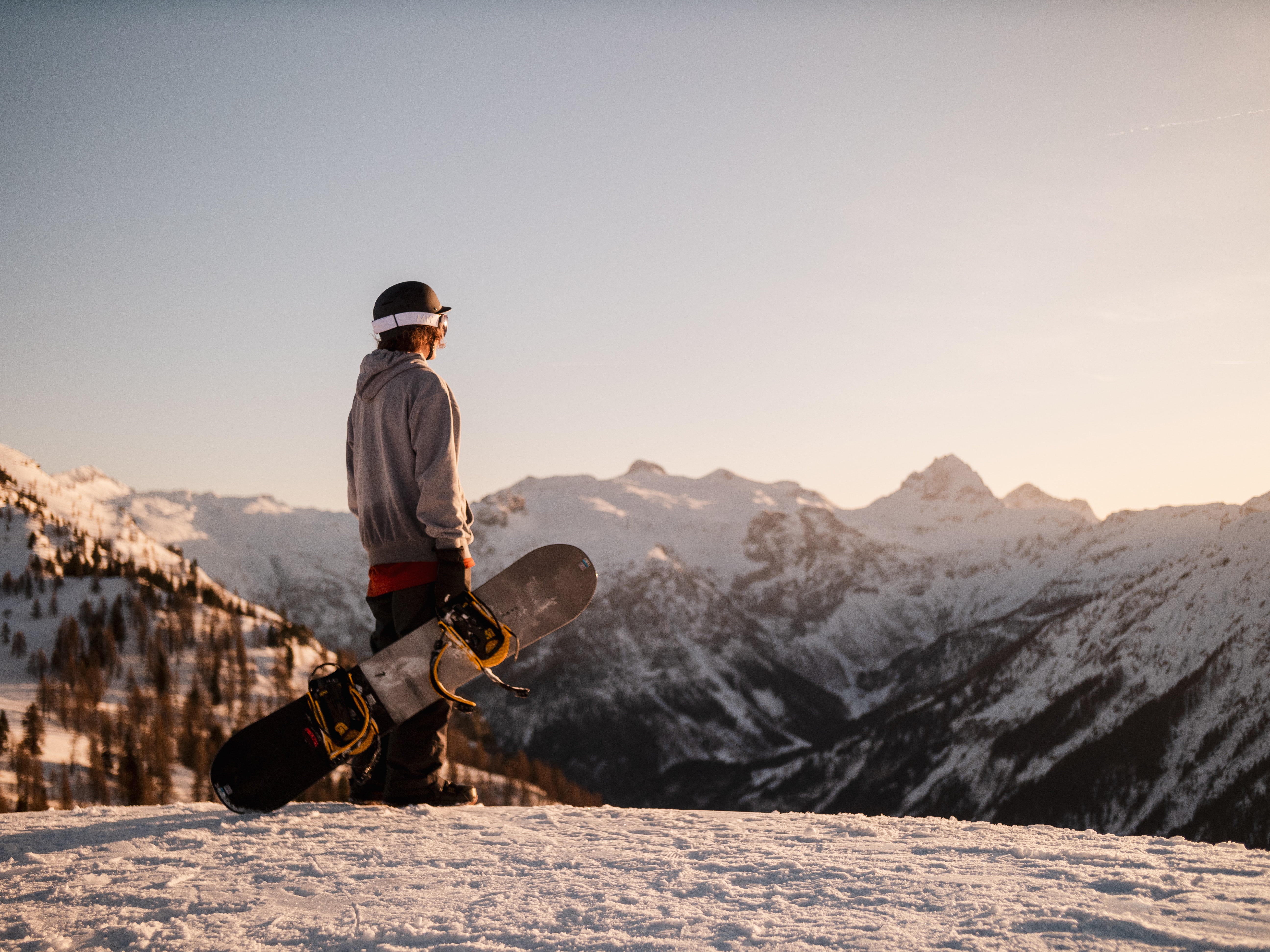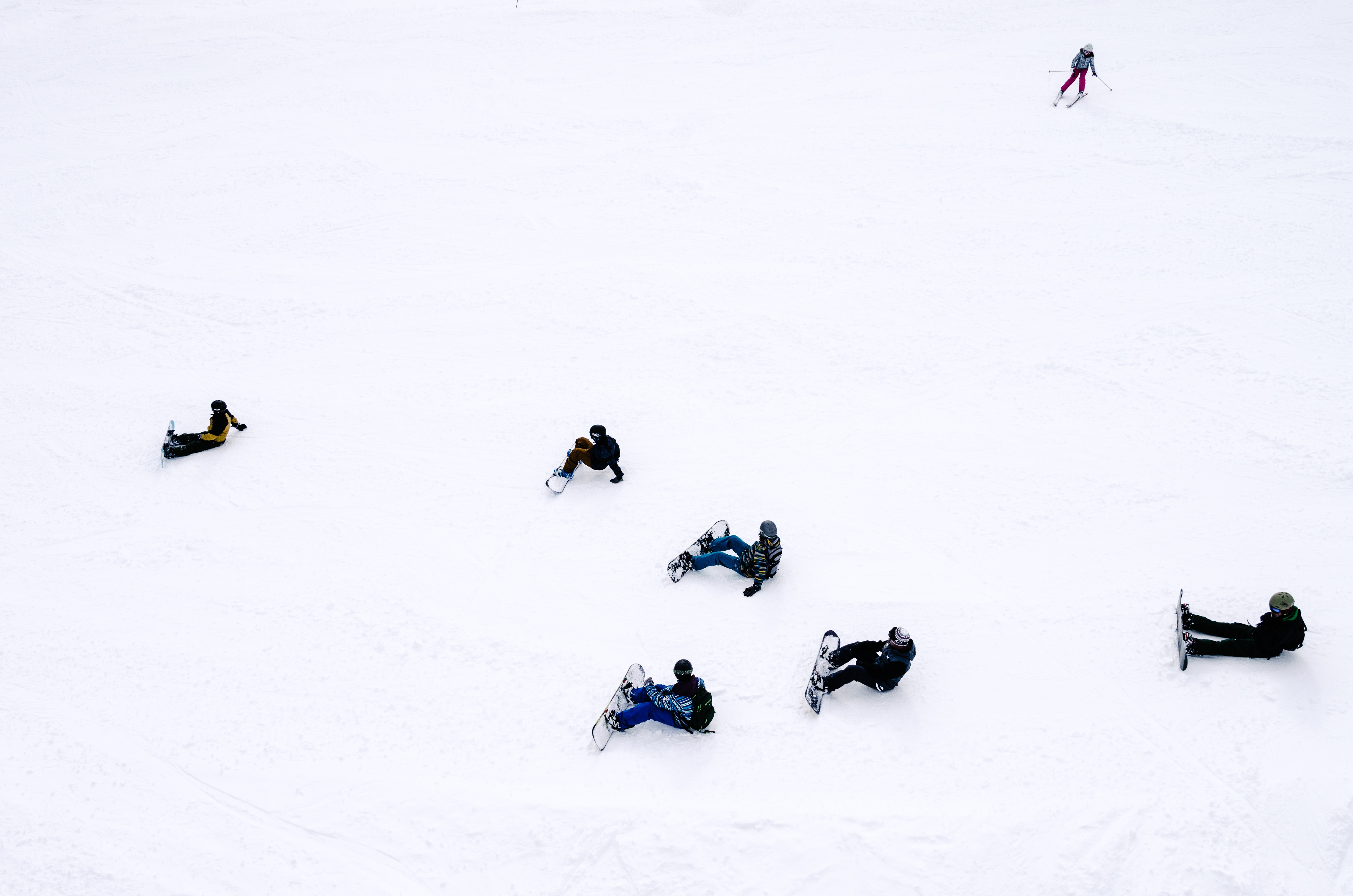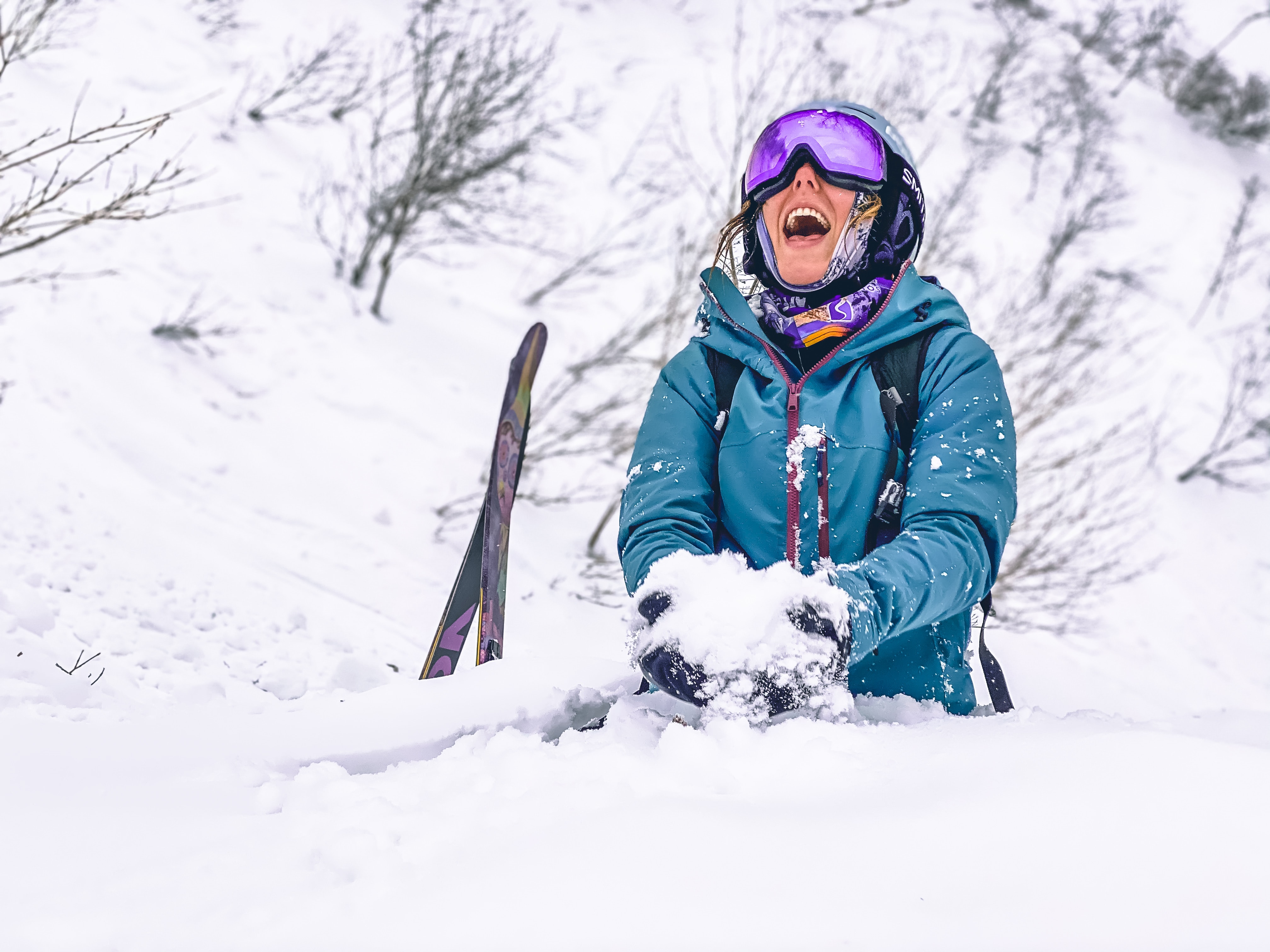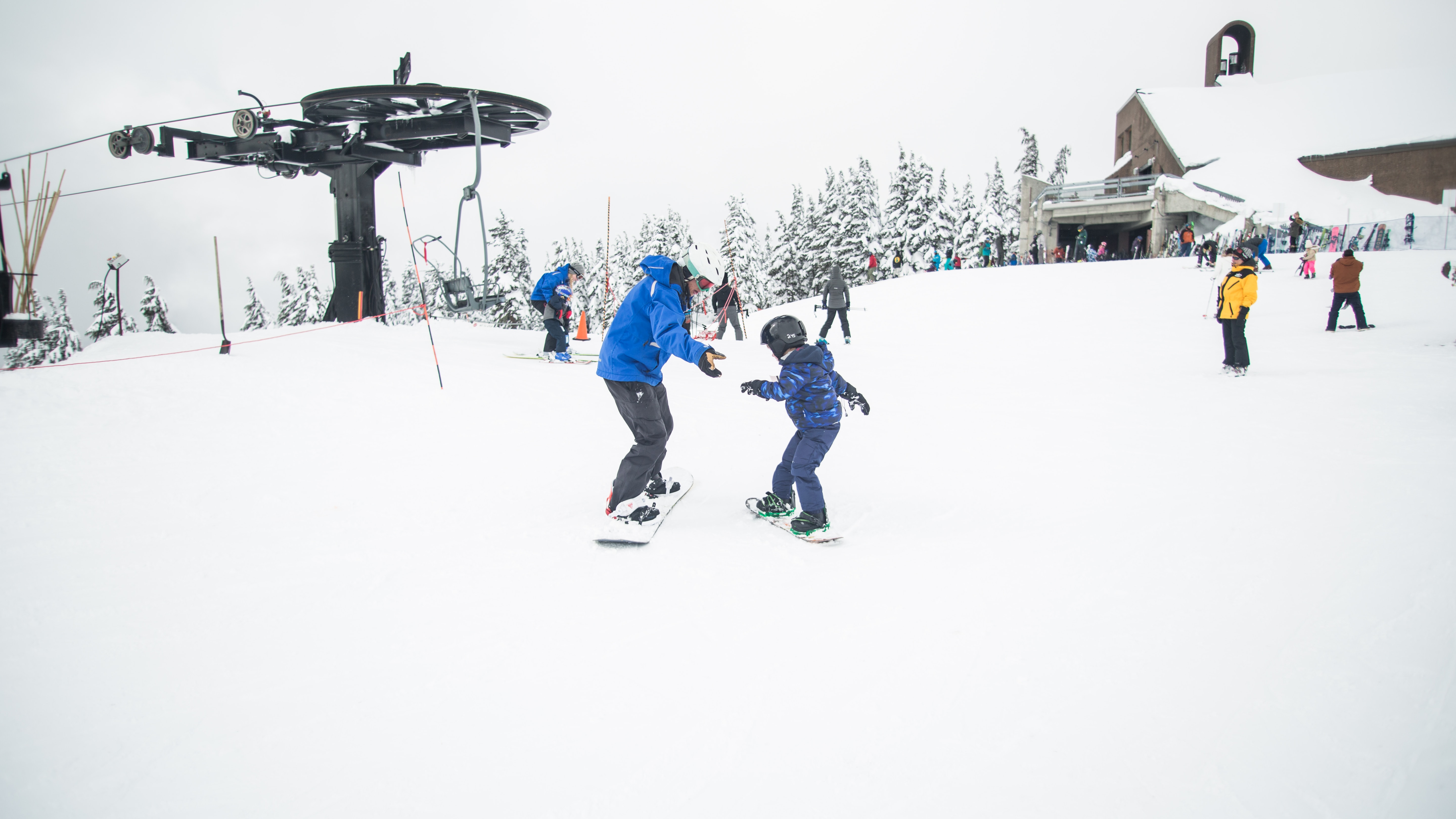16th June 2023

[5 min read]
Snowboarding instructors are some of the most influential people in winter sports. Parents trust them with their children to teach them the fundamentals of the sport. They play a key role in keeping the slopes safe and enjoyable.
Potential instructors have a lot to learn. Here’s what it takes to teach kids the basics of snowboarding.
When Can Kids Start Snowboarding?
There is no definitive answer to this question, but in most cases, children should start snowboarding between the ages of 5 and 7. This is usually when they start playing organized sports at school, so it makes sense to begin snowboarding during the same time frame.
Kids younger than 5 years old tend to have trouble with snowboarding mechanics because they lack the balance to stand sideways on the board. They also don’t have the appropriate attention spans to stay engaged for a whole lesson. However, some skiing and snowboarding schools offer classes for children as young as 3.
Once you pass your instructor exams and become certified, most kids you teach will be 7 to 13 years old. Most kids younger than 5 are too immature for formal lessons, while most kids 13 and up prefer to teach themselves. However, teaching an enthusiastic kindergartner is sometimes easier than dealing with a moody teenager.
Benefits of Snowboarding for Kids
Snowboarding teaches many important lessons to kids. It’s an extremely challenging sport that builds mental and physical toughness. As every snowboarder knows, you will fall hundreds of times before mastering the fundamentals and moving past the beginner level. Any child who perseveres through the early learning stages has demonstrated great character.
Teaching kids how to handle failure at a young age is important. Believe it or not, 70% of children abandon organized sports by 13. Snowboarding is an effective way to instill values such as patience, discipline and determination that allow them to thrive in sports during their teenage years and beyond.
Snowboarding also has numerous physical and cognitive benefits for kids, including:
-
Improving their balance and coordination
-
Strengthening core and lower body muscles
-
Promoting healthy blood circulation
-
Providing an effective high-intensity workout
-
Contributing to healthy ageing
-
Training their depth perception
-
Testing their problem-solving skills
-
Requiring quick and clear communication with other snowboarders
Snowboarding is all about staying calm and thinking clearly in precarious situations. Every run down the slopes presents a new challenge. The sport provides constant physical and mental stimulation that children can’t get anywhere else. \

Challenges of Instructing Kids
Although snowboarding is a great sport for young children, some big challenges come with formal instruction. These are some issues you might encounter while instructing a group of kids.
Keeping Kids Engaged
Kids’ short attention spans will be your biggest hurdle to overcome. Their minds can run all over the place, so you might have difficulty keeping them engaged for the whole session. Beginner snowboarding lessons can be monotonous for young audiences. You must go over the same movements repeatedly, and some children don’t have the patience for it.
Respecting the Mountain
Kids also don’t have a solid grasp of the consequences of their actions. They can be disrespectful to the mountain or other people on the slopes. Littering, breaking tree branches and messing with wildlife are just a few bad behaviors you might notice. You must teach them to be sustainable and responsible patrons with a deep appreciation for the slope’s beauty.
Trying New Terrain
Your lessons will primarily take place on green runs. If a student asks you to try a red or black run, it’s best to err on the side of caution and stay in the green and blue areas until they master the fundamentals. Plus, you don’t want to put other snowboarders in danger. Taking a group of young kids onto a red or black run is a recipe for disaster.
Staying Warm
Youth snowboarding instructors hear the phrase “I’m cold” thousands of times during their careers. Keeping your students warm will be a difficult and never-ending task. They will spend a good amount of time kneeling and lying in the snow, so their top layer will get wet quickly. Although it’s the parents’ responsibility to dress their kids in appropriate cold-weather clothing, you still play an important role in keeping everyone warm and safe.
Understanding Snowboarder Lingo
Young kids will have a hard time understanding snowboarder lingo at first. Avoid using terms like “pow” and “gaper” when instructing beginners. Keep everything in layman’s terms so there’s no room for confusion. You can start incorporating new vocabulary once children gain more confidence.
Instructing Kids vs Instructing Adults
Despite the unique challenges snowboarding instructors face when teaching younger kids, it can be still very rewarding. Children arrive at the slopes as clean slates. They don’t have any bad habits to unlearn, so you can teach them the proper fundamentals without obstructions. It’s amazing to watch them develop.
Kids are also usually very enthusiastic about getting lessons. Adults might feel embarrassed about falling, but children don’t care. They might actually enjoy it. If they have patience, their high energy levels will allow you to give them effective instructions for hours.
Also, younger students see their instructors as role models. If you show a sense of humour and make snowboarding fun, the kids will adore you and look forward to the lessons.

Become an Instructor Today
Instructors are invaluable members of the snowboarding community. Your work can positively affect hundreds of kids during your career. If you’re ready to take the next step, take one of our snowboard instructor courses and get your certification so you can start teaching students as early as next winter.
SnowSkool Guest Author Bio
Jack Shaw's work as a senior writer and editor at Modded has helped establish him as a leading voice in the sports/fitness industry. He has also been published in SportsEdTV, Undiscovered Mountains, and Better Triathlete.
